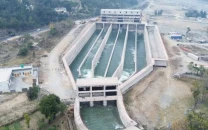Regulating the cement industry
Growing pressure to regulate cement industry in the wake of protests against environmental degradation

Both the apex court and the superior court have endorsed the proposed regulatory measures — approved by a wide spectrum of stakeholders and policymakers, including the mines and minerals department — over the industry. In fact, the courts have in one way or the other helped work out and finalise the measures on account of the environmental concerns raised by members of the civil society. The superior judiciary has also played an instrumental role by withdrawing all injunctions that were given in favour of the cement industry.
The two principal regulators of the industry would include the provincial industries and environment departments but the mines and minerals department would have their role cut out for them such as allowing the use of raw material through mining leases and guaranteeing the reclamation and rehabilitation of mined areas. Cement factories, for instance, would be stopped from quarrying in a new area without full reclamation of the previous damaged area. Industrial obligations would be placed on them.
No fresh cement units would be allowed to operate in the four valleys of the Salt Range. Those already up and running would be asked to move their sustainable water resource to nearby rivers. Other Salt Range areas could accommodate cement factories but these would not be permitted to disturb forest or agricultural land or harm the underground water table in any way.
Published in The Express Tribune, January 9th, 2018.
Like Opinion & Editorial on Facebook, follow @ETOpEd on Twitter to receive all updates on all our daily pieces.














COMMENTS
Comments are moderated and generally will be posted if they are on-topic and not abusive.
For more information, please see our Comments FAQ